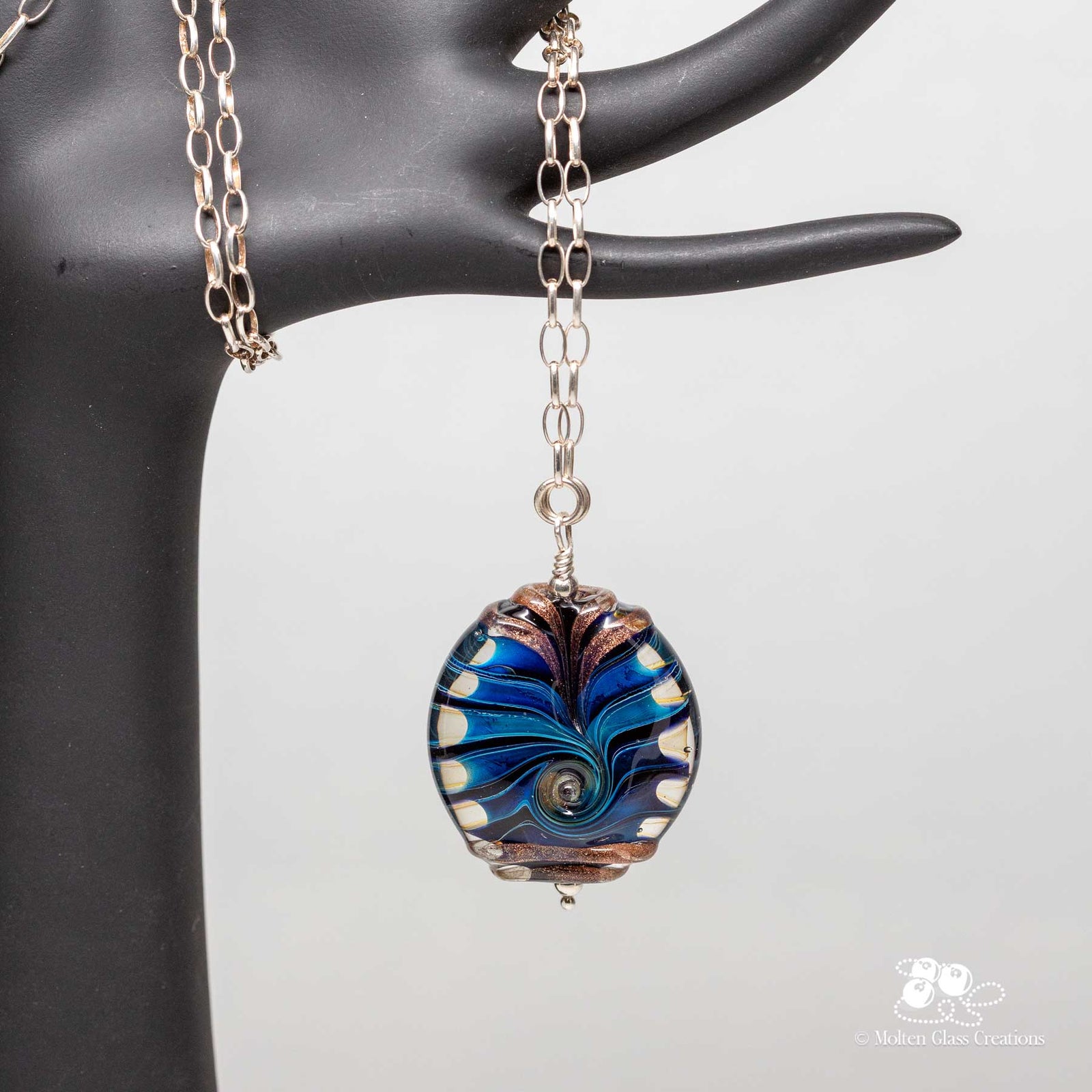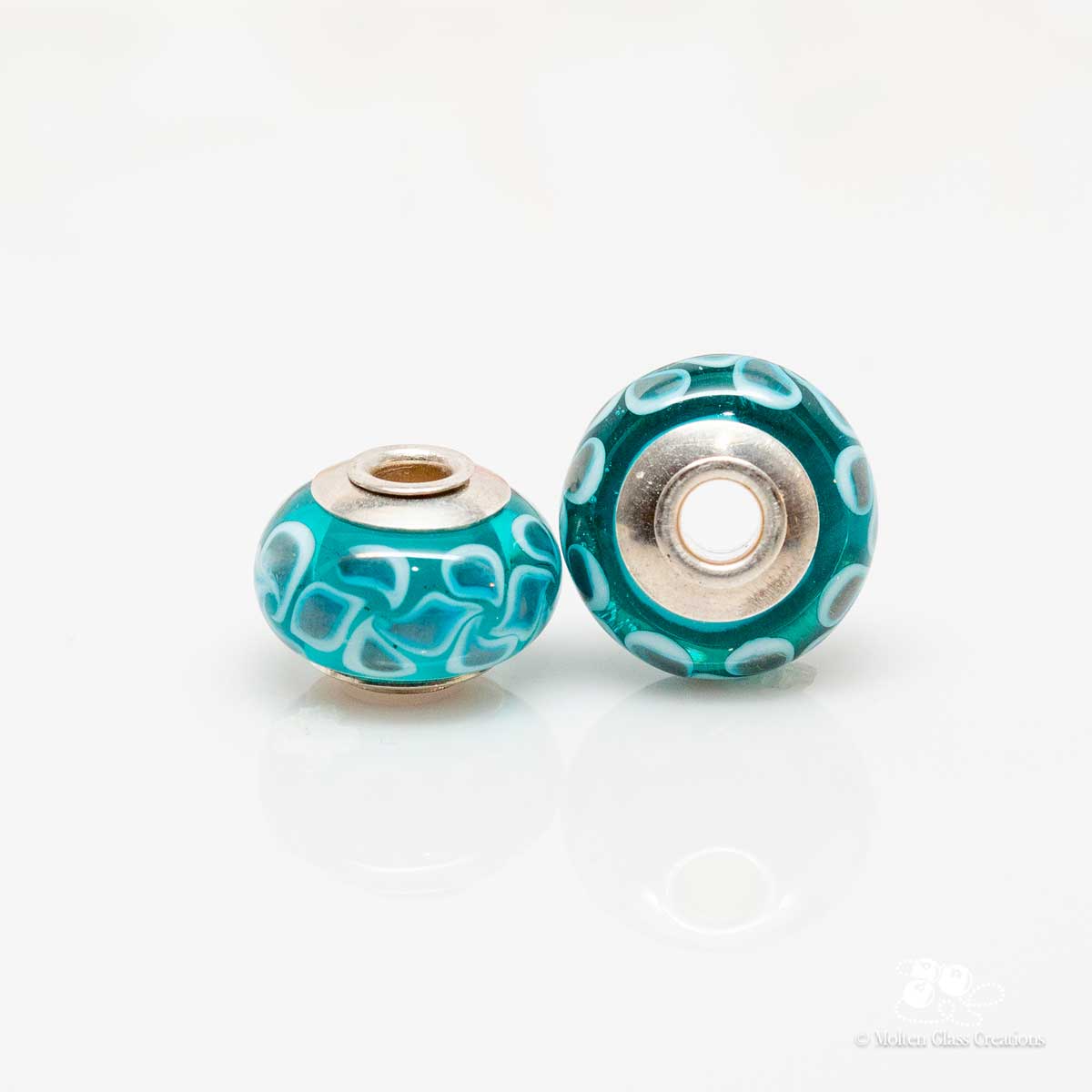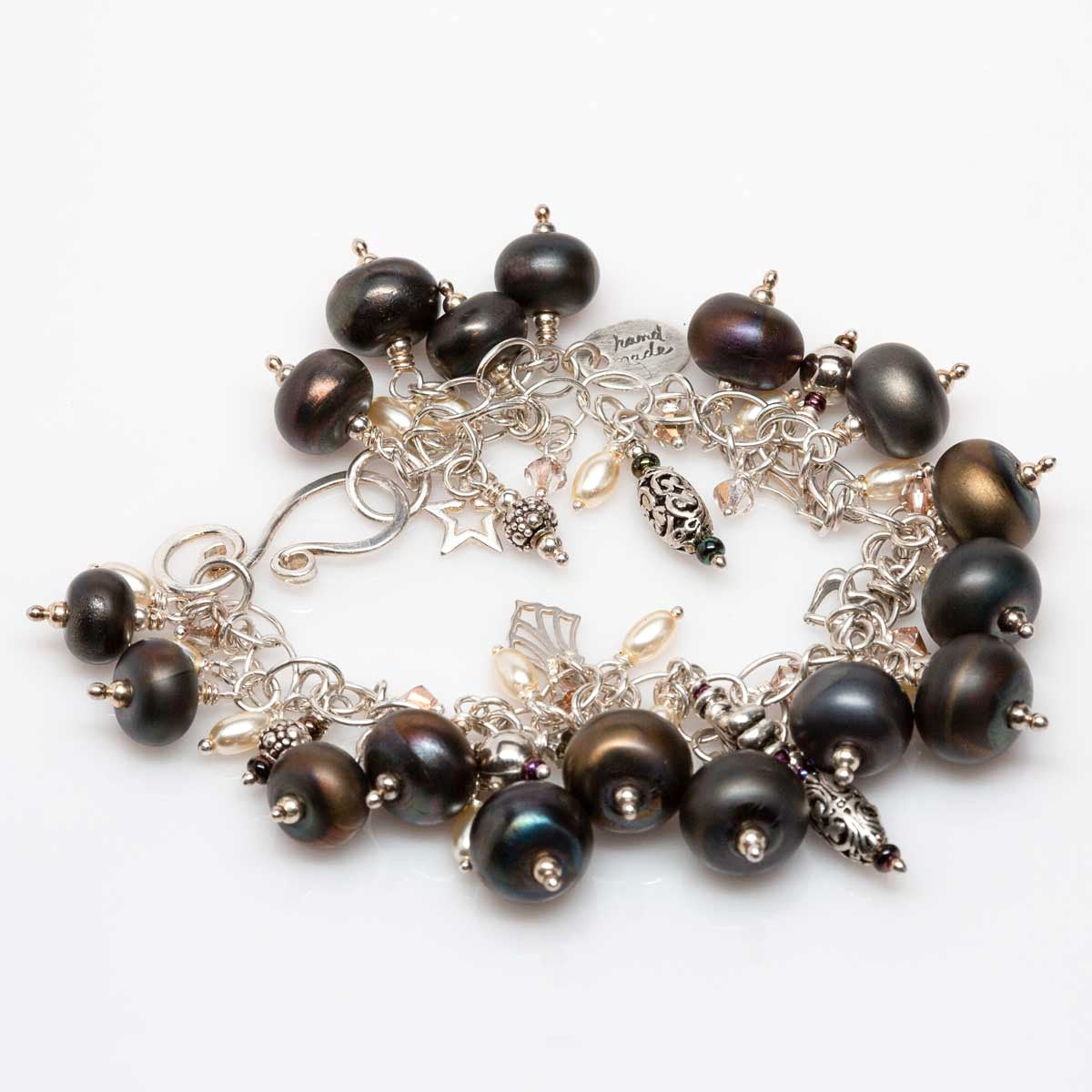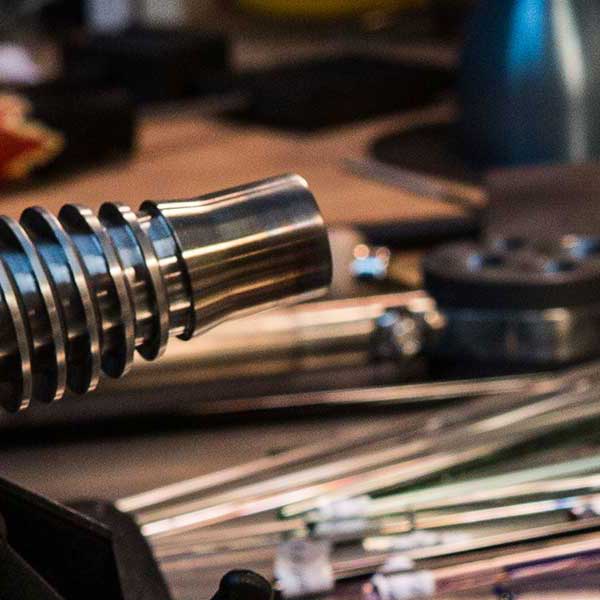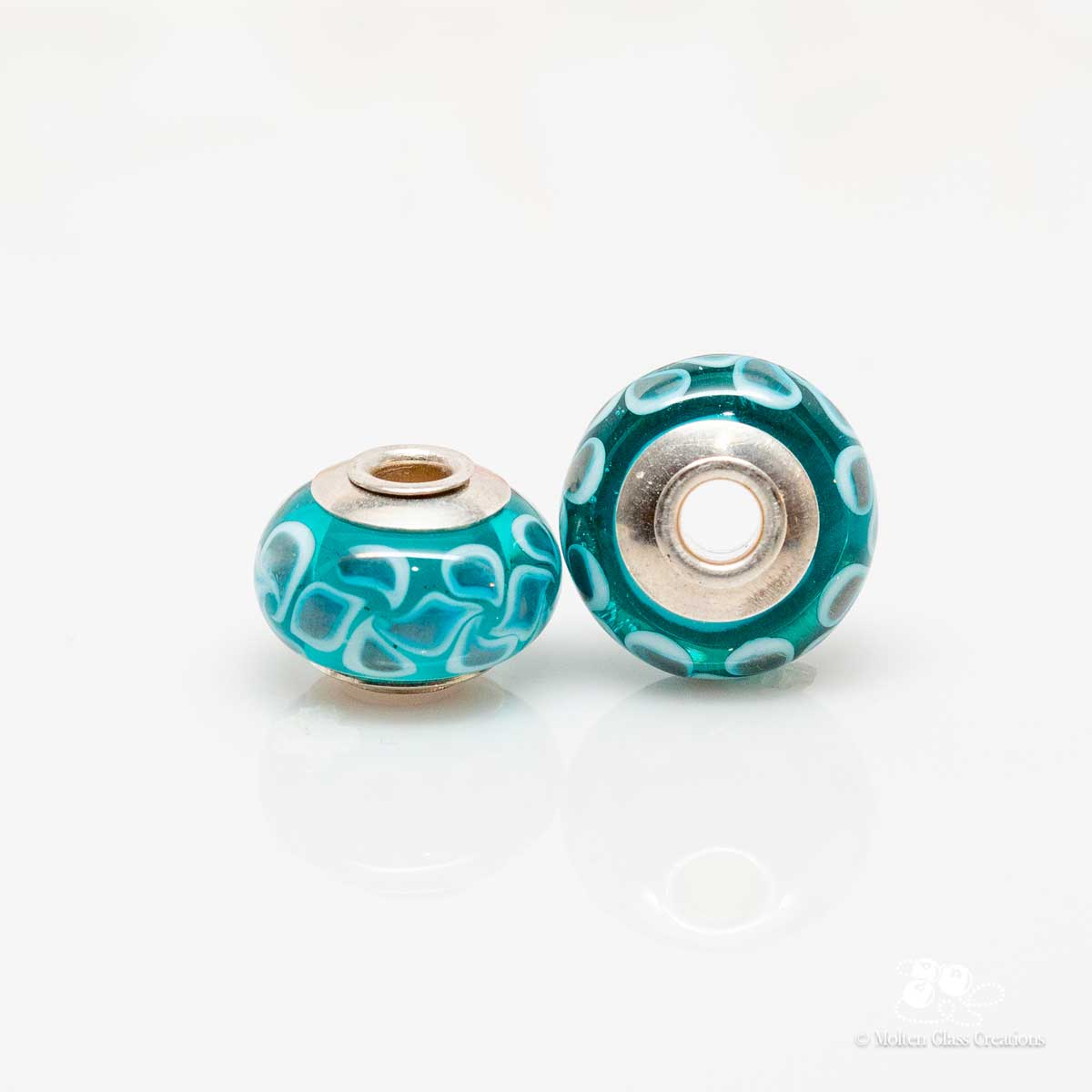A Hole New Perspective
Understanding the Importance of Bead Holes in Glass Beads
When I started making glass beads, I was all about making the beads. Each bead was a form of practice in making a good-looking bead. Each bead had to have nice ends, great decoration, and consistent sizing. I would examine each bead and consider how I could make it into a piece of jewelry. The one thing I rarely paid attention to was the size of the bead hole.
This oversight became apparent when I had to deal with my beads wobbling on the headpin and hampering my use of the ornate bead caps I adored. That’s when the significance of the bead hole size hit me, prompting me to look for solutions to minimize this wobble.
A bead maker friend once shared that she exclusively used 1/16 diameter mandrels, as many designers prefer smaller bead holes. Ultimately, each artist has their preference. My choice to use 3/32 mandrels led me to innovate ways to integrate the bead hole size into my designs effectively.
“Glass beads don’t sit nicely on my bead caps and headpins”
How is the bead hole size created?
The size of the bead hole is determined by the mandrel used during the bead-making process. A commonly used 3/32 diameter mandrel, for instance, results in a slightly larger hole post-bead release. This principle applies to all mandrel sizes, where the mandrel’s diameter and the bead release amount dictate the hole’s size. It’s always important to know the bead hole size in advance for seamless design planning.
For beads with 3/32 or even 1/16 holes, small seed beads can be used to bridge the gap between the bead hole and the head pin. My favoured method, however, is using foam sheets. A simple hole punch creates numerous punch-outs in no time. By carefully stuffing a few pieces of this foam into the bead hole, the head pin is secured, eliminating any sloppiness. This technique is equally applicable to 1/16 diameter holes, though it requires smaller foam pieces.
Line your beads with metal tube
Working with larger bead holes eg: Pandora size bead holes of 5mm or larger, can be lined with metal/silver tubing, a popular and manageable technique. The same technique can be used with beads made on 3/32 mandrels by adjusting the size of the metal tubing used to fill the hole. Both of these options enhance the look of the glass beads and those beads can be worn on chains as necklaces, and on bracelets.
Tubing for these type of beads can be purchased through several North American silver suppliers like Rio Grande. Use calipers to measure the inside of the bead hole and buy tubing as close to that size as you can. If you can only find undersize tubing you will need to build up the tube in some way to fit the inside diameter of the bead. “hint”… think simple!
Make beads with smaller bead holes
Recently I started playing with really thin mandrels. They are .9mm and once they have a dip of bead release the bead hole measures approximately 1mm. That’s about the size of the hole in drilled pearls. With holes this small you can use silk thread and make a knot between beads. It's a pretty look when you consider the number of colours of silk thread available.
While I’m not about to abandon the other sizes of mandrels, I do love how simple it is to wire or string beads with tiny holes. There is a limit to the size of the bead you can make using these thin mandrels because the mandrels flex a lot! The beads range from 9mm to 11mm.

What I really love about these thinner mandrels is I don’t have to stuff the bead hole because my bead will sit nicely on the headpin and not move around a lot.
Like everything, there are always Con’s to the Pro’s. One Con is cleaning the bead hole. To clean out the bead release I have to use a very thin rod, some powdered grit, and do this by hand. The benefit is that the beads are easy to string and I can use bead caps without wobble.
Conclusion
This post isn’t about persuading you to alter your current approach to using glass beads. Rather, it’s about offering new tools and ideas to enhance your design repertoire.
Glass beads are more than just components; they can be the heart of jewelry-making. Their vibrant colours and potential for ornate decoration make them ideal for creating stunning earrings, bracelets, and necklaces. The versatility of glass beads should never be underestimated—they are not just accessories, but focal points that bring life and character to any piece of jewelry.
For those of you who craft jewelry, I encourage you to explore the world of glass beads. They can transform your creations, adding a touch of uniqueness and personality that only handmade beads can offer.
Discover the perfect beads to express your creativity or to add that special touch to your jewelry collection.
